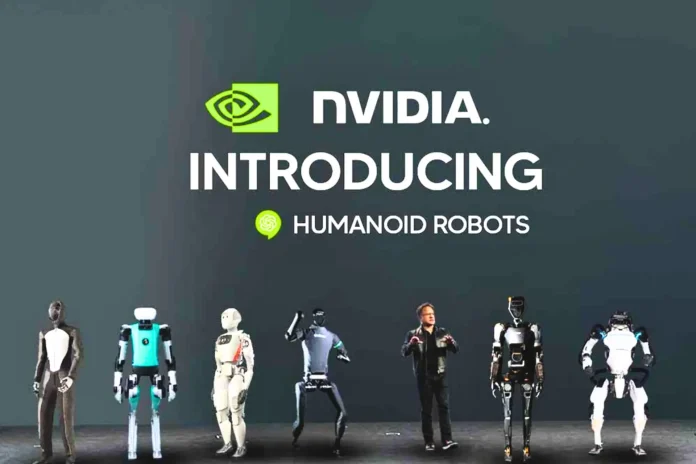The future of robotics is here, and it looks surprisingly human. At the recent Nvidia GTC conference, CEO Jensen Huang unveiled Project GROOT (Generalist Robot Object-Oriented Technology), an initiative that has tech enthusiasts incredibly excited. This project aims to change how robots interact with the world, inspiring them to learn from humans and even mimic our movements.
Robots Can Now Learn by Watching Humans
Imagine a robot that can understand your spoken instructions and grasp objects with human-like ability. Project GROOT aspires to make this a reality. Traditionally, pre-programmed routines have limited robots, making them inflexible and unable to adapt to any situation. This new project changes this by equipping robots with the power of AI and machine learning. During the GTC keynote, Nvidia’s CEO, Jensen Huang, stated, “Building foundation models for general humanoid robots is one of the most exciting problems to solve in AI today.” Here’s how Project GROOT empowers robots:
- Robots equipped with GROOT can understand spoken instructions. Think about a robot chef like Moley Robotics in a restaurant kitchen. Instead of needing specific codes for each dish, it could understand your request for a perfectly cooked steak with roasted vegetables, then proceed to locate ingredients, cook them to your specifications, and even plate the meal for presentation.
- By analyzing video data, robots can learn and replicate human movements. This opens opportunities for a wider range of tasks, from simple object handling to complex tasks. Imagine search and rescue robots like Ascento, with GROOT navigating disaster zones. By mimicking human movements, they could carefully navigate through dirt piles, searching for survivors in confined spaces.
The Brains Behind Project GROOT
Project GROOT isn’t a single invention; it’s a symphony of innovative technologies from Nvidia:
The GROOT Foundation Model:
This AI model acts as the robot’s brain, processing information from various sensors and translating it into actions. Constantly learning and evolving, the GROOT model refines its understanding of the world with new data.
Nvidia Isaac Robotics Platform:
Think of this as the robot’s central nervous system. The Isaac platform provides the software infrastructure for controlling robots and integrates the GROOT model with essential functions like navigation.
Jetson Thor Robotics System-on-Chip (SoC):
This chip, specifically designed for robots, delivers the processing power and energy efficiency needed for real-time AI operations onboard the robot. The robot’s heart, the Jetson Thor SoC, translates complex AI algorithms into real-world actions.
Nvidia Omniverse Simulation Platform:
This virtual world platform serves as a training ground for robots. In simulated environments, robots can experiment and learn from their mistakes before interacting with the real world. Think of it as a digital playground where robots can encounter countless scenarios and refine their skills before handling real-world tasks.
The Possibilities of Project GROOT
The implications of Project GROOT extend far beyond research labs. Here are some exciting possibilities for robots powered by this technology:
- Enhanced ability and adaptability could revolutionize manufacturing. Robots could precisely handle delicate components, streamlining production processes and improving factory safety.
- Automated robots could optimize warehouse operations, handling tasks like order picking and inventory management more efficiently. Imagine a warehouse with robots that can navigate aisles, select the correct items, and carefully pack them for shipment.
- Project GROOT could transform search and rescue efforts. Its human-like movement capabilities could help robots navigate tricky environments, locate survivors, and assess situations in disaster zones.
- Robots could provide companionship and assistance to elderly individuals, promoting independent living. These robots could help with daily tasks like meal preparation or medication reminders while offering social interaction and emotional support for seniors living alone.
Challenges and Considerations
While Project GROOT is a new advancement, there are still challenges to address. As robots become more intelligent, ensuring their safe and ethical operation becomes most important. Strong safety protocols and clear ethical guidelines are essential for responsible deployment.



